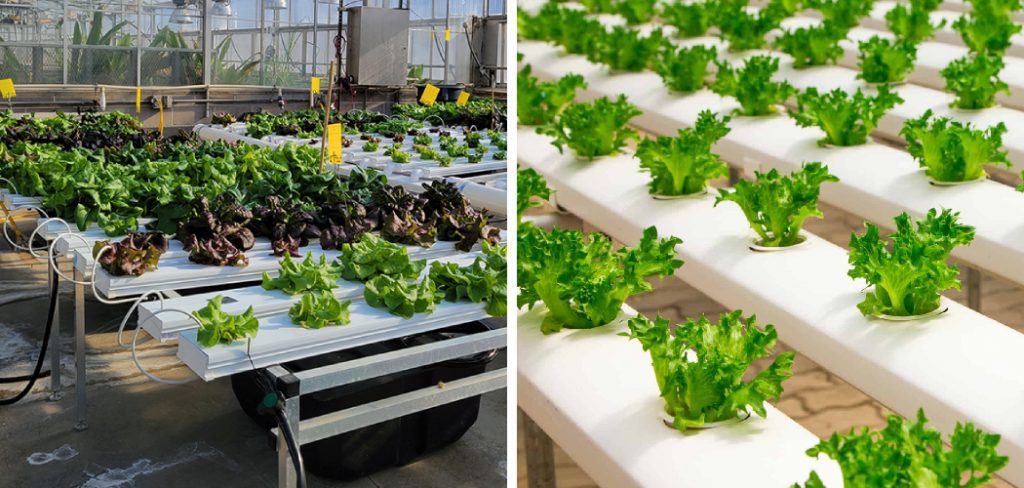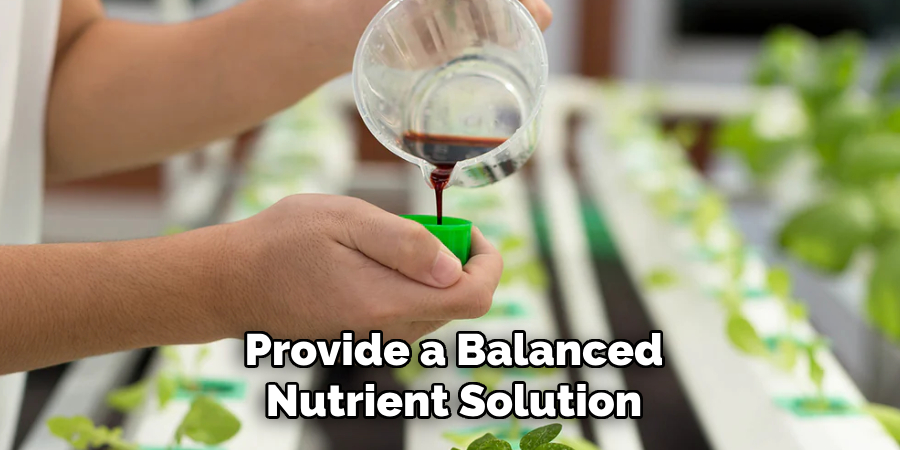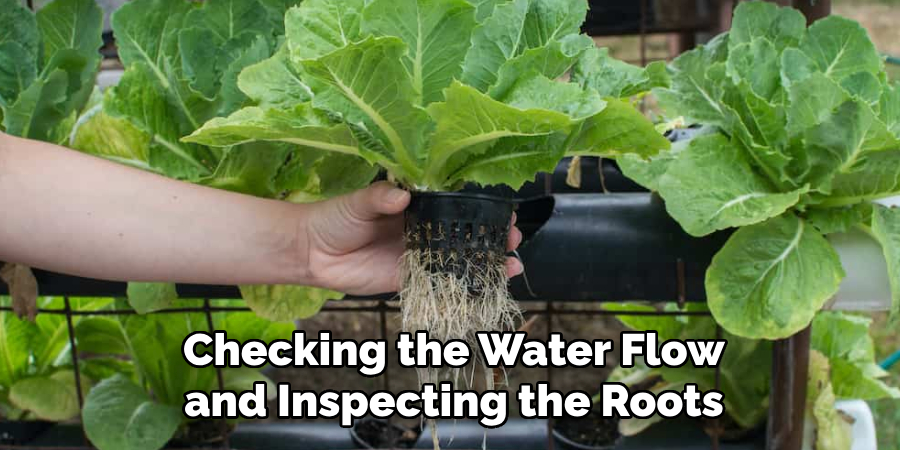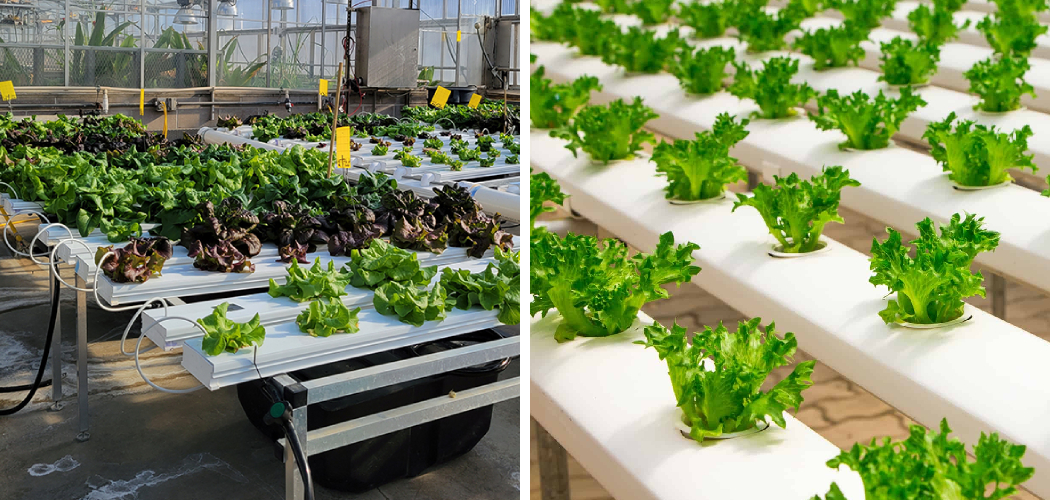To build a hydroponic greenhouse, you need to choose a suitable location and construct a controlled environment optimized for hydroponic growing. The greenhouse should be equipped with proper lighting, ventilation, and irrigation systems to support the growth of plants without soil.
Consider factors such as water source, nutrient solution, climate control, and monitoring systems to ensure successful hydroponic cultivation. Hydroponic greenhouse farming is a cutting-edge, sustainable agricultural practice that allows plants to grow in nutrient-rich water without the need for soil.
This innovative method has gained popularity due to its numerous benefits, including higher crop yields, reduced water usage, and minimized pesticide use. Building a hydroponic greenhouse involves careful planning and implementation of essential elements, such as the location, lighting, ventilation, and irrigation systems. We will explore the key steps and considerations involved in constructing a hydroponic greenhouse to help you embark on a successful hydroponic farming journey.

Understanding Hydroponic Greenhouses
Hydroponic greenhouses offer numerous advantages over traditional greenhouses. By understanding the differences between the two, you can make an informed decision about which type of greenhouse is best for you. Hydroponic greenhouses rely on a nutrient-rich solution instead of soil, allowing plants to grow faster and produce higher yields.
With precise control over water, temperature, and nutrients, hydroponic systems optimize plant growth and minimize water usage. Additionally, hydroponic systems eliminate the risk of soil-borne diseases and reduce the need for pesticides. These innovative greenhouses are also more space-efficient, as plants can be grown vertically.
Overall, hydroponic greenhouse farming maximizes productivity, conserves resources, and provides a sustainable alternative for cultivating plants.
How to Build a Hydroponic Greenhouse: Step by Step Guide
Essential Components For Building A Hydroponic Greenhouse
Selecting a suitable location for the greenhouse is the first step towards building a hydroponic greenhouse. Consider factors such as sunlight exposure and accessibility to water and electricity. Next, choose the right greenhouse structure based on your requirements and available space.
Options include freestanding or attached greenhouses made from materials like glass, polycarbonate, or polyethylene. Once you have the structure, install the necessary infrastructure. This includes setting up a proper ventilation system, irrigation system for water supply, and electrical connections for heating, cooling, and lighting.
Additionally, ensure the greenhouse has proper insulation to maintain a stable environment for plant growth. Building a hydroponic greenhouse requires careful planning and attention to detail, but the end result can provide a controlled and efficient environment for growing plants.
Designing And Setting Up The Hydroponic System
Designing and setting up the appropriate hydroponic system in your greenhouse is crucial for success. When selecting a system, consider factors such as your space and plants’ needs. Next, focus on setting up the irrigation system to deliver nutrients effectively.
Proper lighting and ventilation should also be implemented to create an optimal growing environment. Ensure your greenhouse has the necessary amount of light and good air circulation. By following these guidelines, you can build a hydroponic greenhouse that supports healthy plant growth and increased yields.
With careful planning and attention to detail, you can create the ideal hydroponic system for your greenhouse and enjoy the benefits of year-round, sustainable gardening.
Selecting The Ideal Crops For Hydroponic Greenhouses
Selecting crops for hydroponic greenhouses involves understanding their requirements and growth characteristics. By evaluating the market demand and profitability of different crops, growers can make informed decisions. Choosing the ideal crops is crucial to ensure successful hydroponic cultivation. Various factors such as nutrient requirements, temperature, light intensity, and water ph should be considered.
Additionally, the availability of space and resources plays a significant role in crop selection. High-value crops like lettuce, herbs, and strawberries are popular choices due to their relatively low cost of production and high demand. On the other hand, specialty crops like microgreens and edible flowers can fetch a higher price in niche markets.
By carefully identifying crops that thrive in hydroponic environments, greenhouse owners can maximize their productivity and profitability.
Nutrient Management In Hydroponic Greenhouses
Nutrient management is crucial in hydroponic greenhouses. Ph levels and nutrient concentrations should be regularly monitored for optimal plant growth. It is essential to provide a balanced nutrient solution to ensure healthy development. To maintain equilibrium, nutrient deficiencies and toxicities must be effectively managed.

By addressing any imbalances, plants can thrive and reach their full potential in a hydroponic greenhouse. With careful attention to nutrient management, growers can cultivate a successful and productive hydroponic system. Expertly managing the nutrient solution will lead to robust and vibrant plants, resulting in a thriving hydroponic greenhouse.
Pest And Disease Control In Hydroponic Greenhouses
Pest and disease control in hydroponic greenhouses is crucial for maintaining a healthy and successful system. By implementing preventive measures, you can minimize the occurrence of pest and disease issues. It is important to identify common pests and diseases that can affect hydroponic systems.
Once identified, you can apply biological and integrated pest management techniques to control them. These techniques involve using beneficial insects to naturally control pests and using cultural practices to create an unfavorable environment for pests and diseases. Integrated pest management also includes regularly monitoring the greenhouse for any signs of infestation and taking immediate action if any are found.
By following these practices, you can ensure the long-term health and productivity of your hydroponic greenhouse.
Maintaining A Sustainable Hydroponic Greenhouse
Maintaining a sustainable hydroponic greenhouse involves managing water and energy consumption efficiently. By utilizing renewable resources and adopting sustainable practices, greenhouse owners can minimize their environmental impact. It is important to regularly assess and optimize greenhouse productivity to ensure maximum efficiency.
This can be achieved by monitoring water usage, implementing efficient irrigation systems, and utilizing energy-efficient technologies. Additionally, using renewable energy sources such as solar panels can help reduce dependency on traditional electricity sources. By carefully managing water and energy consumption, greenhouse owners can create a sustainable and eco-friendly environment for their hydroponic plants to thrive.
Assessing and optimizing greenhouse productivity is an ongoing process that requires continuous monitoring and implementation of sustainable practices.
Troubleshooting And Maintenance Tips For Hydroponic Greenhouses
Maintaining a hydroponic greenhouse involves troubleshooting and regular maintenance routines to ensure the system runs smoothly. Identifying common issues through careful observation is key. From nutrient imbalances to clogged pumps, being proactive is essential. Implementing a regular maintenance schedule prevents problems before they occur.

Conduct regular checks on the ph levels, nutrient solutions, and water temperature. Spotting system malfunctions early on allows for quick resolution. Troubleshooting techniques like checking the water flow and inspecting the roots are crucial for efficient operation. Keeping an eye out for any potential problems and addressing them promptly will help you build a successful hydroponic greenhouse.
Scaling Up And Expanding Your Hydroponic Greenhouse
Assessing the potential for expanding your hydroponic greenhouse entails evaluating its feasibility. Consider factors such as available space, resources, and financial capacity. Plan strategically to accommodate increased production levels, including the procurement of necessary equipment and infrastructure. Scaling up brings challenges, including managing larger crop quantities and maintaining crop quality.
Take into account potential hurdles, like higher operational costs and staff requirements. To ensure a successful expansion, carefully consider these considerations and develop a comprehensive strategy that addresses each aspect. Scaling up a hydroponic greenhouse operation requires careful planning and preparation to overcome potential challenges and achieve sustained growth.
Remember to optimize your production methods, monitor market demand, and adapt your operation accordingly. With the right approach, you can successfully expand your hydroponic greenhouse and tap into the increasing demand for sustainable and efficient farming practices.
Frequently Asked Questions On How To Build A Hydroponic Greenhouse
How Can I Build A Hydroponic Greenhouse At Home?
To build a hydroponic greenhouse at home, you’ll need to start by selecting the right location, install a hydroponic system for plants to grow without soil, set up proper lighting and ventilation, and ensure regular monitoring and maintenance. Additionally, choose the right plants for hydroponic growing and provide them with the necessary nutrients and water.
What Are The Benefits Of A Hydroponic Greenhouse?
A hydroponic greenhouse offers numerous benefits such as higher crop yields, faster growth rates, efficient use of water and nutrients, and better control over growing conditions. It also allows you to grow plants year-round, regardless of the weather conditions outside, and eliminates the need for pesticides or herbicides.
What Crops Can I Grow In A Hydroponic Greenhouse?
In a hydroponic greenhouse, you can grow a wide variety of crops including lettuce, herbs, tomatoes, cucumbers, peppers, strawberries, and even flowers. The key is to choose plants that thrive in hydroponic systems and can tolerate the controlled environment of the greenhouse.
Experiment with different crops to find what works best for you.
Conclusion
With the increasing demand for sustainable farming practices, hydroponic greenhouses have emerged as a viable solution. By utilizing water-based nutrients and controlled environments, hydroponic systems can produce fresh and healthy crops without the need for soil. Throughout this blog post, we have explored the step-by-step process of building a hydroponic greenhouse, from selecting the right location to setting up the necessary equipment.
We have discovered the benefits of hydroponic farming, such as higher crop yields, water conservation, and year-round production. Moreover, the flexibility and scalability of hydroponic systems make them suitable for both hobbyists and commercial farmers. Building a hydroponic greenhouse is an innovative and efficient way to grow crops and contribute to a greener future.
By implementing the techniques discussed in this blog post, you can embark on your hydroponic journey and witness the bountiful rewards of this sustainable farming method.

